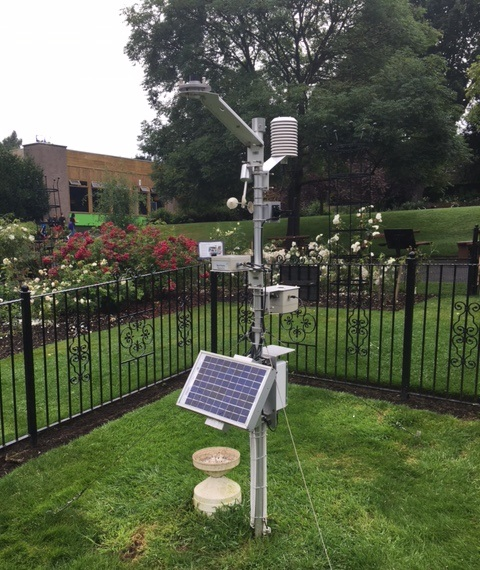When I moved to the Northgate area near Hillcrest and Westlake Blvd seven years ago, the Conejo Valley was a black hole regarding weather reporting. The National Weather Service (NWS) relies heavily on volunteers to fill in the areas between the airports for timely weather information and to create local climate records. These “cooperative weather observers” have instrumentation which has been inspected and approved by the NWS set up at their homes or businesses. In 2015, the NWS routinely provided data from Simi Valley, Woodland Hills, and Camarillo, but nothing from Agoura to Newbury Park. We all know how different conditions can sometimes be in the Conejo Valley compared to the Oxnard Plain and the San Fernando Valley.
I set up a Davis Vantage Pro 2 weather station behind my residence and soon had the data online. I asked my friends at the NWS in Oxnard if they were interested in adding Westlake Village to their lists of stations for their area of coverage, and they were happy to do so! I have been the NWS cooperative observer in Westlake Village for about seven years. When you read about the weather in the Conejo Valley, much of the information comes from data collected in my backyard.
I have been recording the weather daily since about 1977 when I started college to the present day from Woodland Hills to Agoura Hills to Westlake Village. When I was a climatology student at CSU Northridge, the geography department loaned me the standard temperature and precipitation instrumentation to set up in my backyard in Woodland Hills. That’s how I got started.
In the 1980s and 1990s, I was the observer for the NWS in Woodland Hills. I was given the task of checking high and low temperatures for the day and any 24-hour rainfall amount. I had to phone in that information to the NWS around 4:30 p.m. As a spotter, I would also call in any unusual weather activity as needed, such as strong winds, dense fog, thunderstorms, or hail.
Today, in Westlake Village, my weather station is connected to a computer and the Internet, so the NWS receives the data it needs automatically. I no longer worry about being home every day at the designated time or rounding up a friend or relative to report the observation in my absence. Now all I have to do is make sure that my station, computer, and the Internet are working. In the 1980s and 1990s, as an observer, I checked thermometers in a large white shelter with louvered sides, and I manually measured rain which fell into an 8-inch diameter rain gauge. Today, the temperature is measured by a sensor in a radiation shield, and rainfall is measured when it drips through a funnel and causes a “tipper” to fill and tip over. Each “tip” means that 0.01 inch of rain fell. Thanks to electronics and wi-fi, nobody needs to be around at 4:30 p.m. to call in the weather!
The daily maximum and minimum temperatures, and any 24-hour rainfall amount for Westlake Village, appear on the daily “RTP” product (Regional Summary), compiled and disseminated by the NWS in Oxnard. Several dozen stations from Los Angeles County to San Luis Obispo County are included on this list. This is heavily relied upon by the media for their news and weather broadcasts and weather sections in the newspapers. In addition, the temperature, humidity, wind, and pressure data for Westlake Village are provided on the NWS’s “Hourly Weather Update” product. It is easy to find out the current conditions in Westlake Village and compare the weather to other places.
More recently, my friend Bob Kahn has had his weather station in Sunset Hills of Thousand Oaks added to both these NWS products. And the NWS has also added a second Thousand Oaks station to its Hourly Weather Update list, courtesy of instrumentation by the State of California. This station is on the roof of the Civic Arts building. If you are a “weather weenie” like Bob and me, then you might want to subscribe to the “Thousand Oaks Weather” group on nextdoor.com. Bob provides updates by each evening and includes the daily weather data from his station and mine, plus a forecast.
I recently scanned and uploaded my 40-plus years of weather records and photography to my website (stormbruiser.com). I am a tour director for a storm chase tour company (Tempest Tours) in the spring. You may find some tornado and lightning images on there! I am also a certified weather observer at Los Angeles AP, Point Mugu AP, and the Navy airport out on San Nicolas Island. I love capturing information about the weather and making it available to others.

